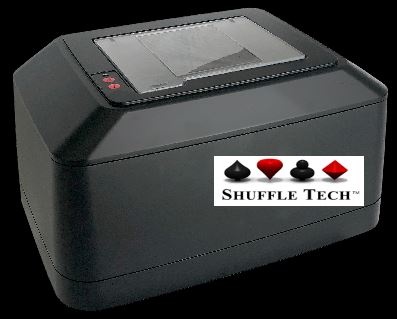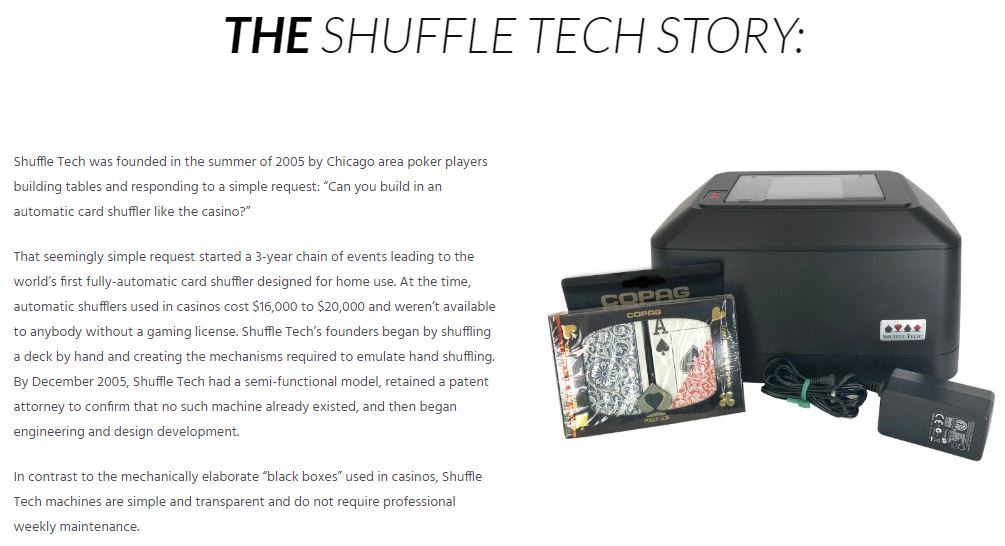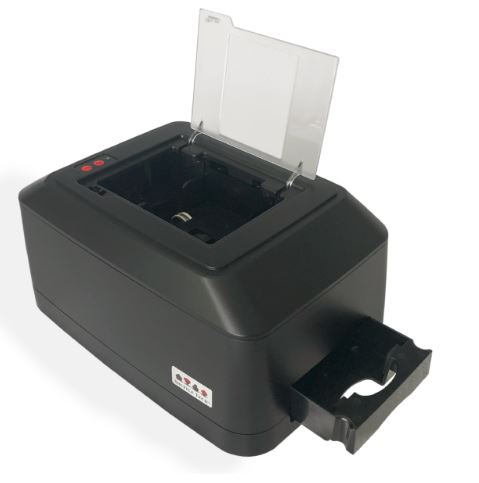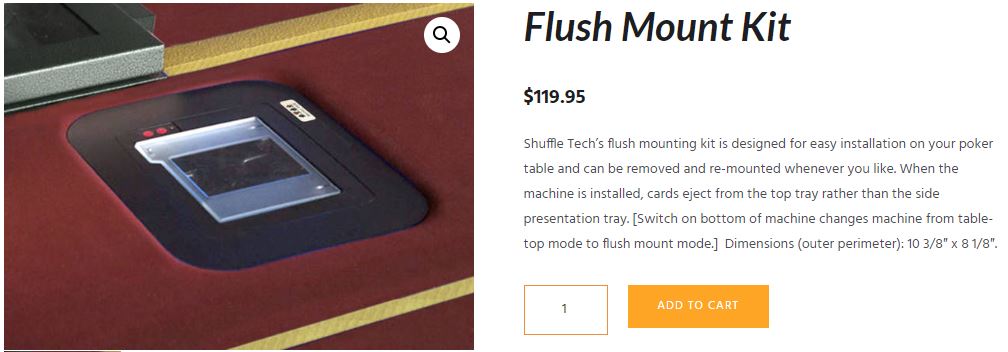Unlike other gambling games, poker lends itself to being a very content-rich environment. There are so many components of the game that can be objectively interesting, including player stories, the stories and career arcs of those who work in the industry, the venues housing massive poker festivals, and more. One component of poker that’s far less explored is the art of the shuffle. Randomization of cards is essential to run a fair poker game and that’s something that every dealer and card room must ensure is done properly. As in most fields, technology has a way of helping things progress. With regards to the humble shuffle, then, that’s meant the innovation of high-tech machinery to enable faster, better card mixing.
Card shuffling technology can be thought of as a net good, as it benefits all parties as relates to a poker game. The house is happy because more hands get dealt, and thus more rake is generated. Players are happy, as they get to see more hands per hour rather than have time “wasted” waiting for manual shuffles, and dealers’ physical labor is curtailed severely, with numerous repetitive motions no longer necessary when there’s a shuffling machine at the table. Even in a home game setting then, with no rake or paid dealer, automatic shufflers have the potential to enhance the overall experience for poker players and ensure a reliably randomized shuffle for each and every hand.
The above paragraphs might seem like the end of the shuffling story, but there’s obviously a lot more to it. Who are the people behind shuffling technology, for instance? How was the technology developed? Are there any additional potential advantages to a machine shuffle that might not be obvious? I felt that the answers to questions like those would be something that Cardplayer Lifestyle readers would find intriguing, so in an attempt to better understand what “the world of shuffling” is all about, I reached out to Rick Schultz. The CEO of Shuffle Tech, Schultz was kind enough to agree to an interview covering “everything you ever wanted to know about shuffling.” In telling his story and the story of his company, Rick offered some fascinating new insight into a component of poker (and other table games) that we all pretty much take for granted nowadays.

Is the poker industry something that you first got into as a kid, young adult, or in your later years?
Certainly in my later years, and I really hadn’t been so much interested in playing as in the randomization of the cards. When I first got into this business, it was actually because I had been introduced to the founder of Shuffle Tech, Mr. Hiro Toyama, by an engineering firm that had told me that he needed both investment and manufacturing and marketing expertise. As I looked at the product and saw both how it worked mechanically and how it applied to poker as well as all other card games, I was instantly interested.
So my understanding is that Shuffle Tech was founded in 2005. What inspired the company to be founded in the first place?
The company’s founder, Hiro Toyama, was an avid poker player. He played all the time, both in the casinos in Indiana as well as in a lot of private poker games. That’s where he began to see the real need for an automatic shuffler for home games and private games that was equivalent to what he was seeing used in the casinos.
He’d see that when he was playing in the casinos, the cards were shuffled continuously by the machines while the games were being played. When he got back to the private games, there was always a delay while the dealer was shuffling. Plus, dealers at home games didn’t always have the skills to shuffle reliably. When one of his close friends and another player asked him to locate one of those casino-like machines, and he discovered that they cost as much as a car, and simply weren’t available to non-regulated, non-licensed individuals, that motivated him to invent one that could be available to anybody.

So let’s get into the shuffler itself. I’m not an engineer, but it seems to me that designing an automatic shuffler from scratch would be kind of a tall order. Could you clue us in as to the process of how that happens?
We have two different technologies, and both, in my view, reflect a brilliance on Hiro’s part. There used to be a phrase that was commonly used in patent law, it was “a flash of genius.” It’s not used so much anymore, but I think that it’s a phrase that really applied to what Hiro was doing with both. With the first machine, the ST-1000, he didn’t really have an engineering budget. He only knew that he wanted to develop a workable machine, but he had no idea how to do it. The only other machines that were really available to him were these $5.99 machines that you could buy at Wal-Mart. So he wound up buying a couple, which were useless for poker, but he started using them to figure out the mechanics of handling cards mechanically rather than by hand.
As he continued to work through it and begin to build prototypes, he would use the parts – the motors and the gears off those $5.99 machines – to move the cards within the device, and he eventually figured that the way to automate that process to replicate hand shuffling was to be able to have a main center tray where the cards were cut or split to both side trays, and then riffle back together back into the center tray. That’s where the center tray would have to dispense from the bottom of the tray and then move lower to receive from the top of the tray. That really was ultimately the invention.

Shuffle Tech ST-1000
Now, in the course of developing that ST-1000 machine, he’d also invented another technology which he never really knew how to implement. He again had that flash of genius to, rather than replicate hand-shuffling, eject the cards into the air within a compartment to have them shuffle. So he had that idea, but he never really had any idea how to implement it, and he’d always told me that the way to do it was with solenoids.
What are solenoids?
A solenoid is just an electromechanical and electrically actuated button or a latch; anything of that nature. The idea was that the solenoid blades would eject the cards into the air; and in theory, it worked, except as a practical matter he could never make it work quite right.
He built a “prototype” using a carton of cigarettes and a can of compressed air, and he cut an aperture into the cigarette carton. He showed me an original clean deck of cards, and with 20 seconds of shuffling within this crude device, he showed me how he could randomize the deck, and he did it several times, and apparently produced different results.
That actually became the better technology, and that’s the basis for new machines that we’re going to be introducing for the consumer market in 2020. But prior to that, we had developed that technology into what is now the Dex-S shuffler in casinos, which AGS sells, using technology purchased from us.
When you’re designing a product like an automatic shuffler, especially with this specific aim of targeting home game poker players, you obviously need to know that audience very well, and it’s pretty niche. Not every home game is prepared to spend hundreds of dollars to enhance that experience. So from a business perspective, what are the factors that made you feel that there’s a market for your product, and people are willing to spend money on it?
Before I got involved with the company, Mr. Toyama had been deeply involved in private home games all around Chicago. He knew that not everybody was going to spend this kind of money, only people who were really serious about their games. But for people who are serious about the games, the machine is not too expensive. It’s $600, and then another $120 to mount it in the table. For a serious game, that’s really not a lot of money.

Obviously, for a lot of people who are just playing as a hobby, it might be cost-prohibitive, but our niche is serious players who are committed to having games that are both played at the speed of the players, rather than at the speed of the dealer, and where $599 is just not a lot of money to spend, particularly when you think of that amount spread over the lifetime of a home game.
Once you buy a machine, you’re going to use it regularly. Our players typically play at least once a week, for six to eight hours. Many of them will even play multiple times per week with our machine.
We ship worldwide and have customers all over the world. Besides the United States, we have sold a lot of machines in Europe, Australia, and even Africa.
To what extent does an automated shuffle improve on a manual shuffle? In other words, how mixed is the deck when a dealer, or one of the players in a home game, shuffles it compared to a good shuffling machine?
Well, there’s a couple different kinds of “good” shuffling machines. If a dealer properly hand shuffles the deck of cards, it can be randomized very effectively. The challenge is, of course, as most players have seen, not every dealer knows how to properly shuffle, let alone do so consistently between every hand. If the machine’s operating as expected, it can consistently shuffle, randomize the deck every hand in 35 seconds while a different deck is in play. So, at a minimum, it speeds up the game.
When you’re developing and patenting shuffling technology, undoubtedly you’ll face some hurdles or challenges. Maybe you could explain or relate one of the greatest difficulties that your company had in perfecting the process behind the product?
With the ST-1,000, the greatest difficulty was that there was really no direct precedent shuffler for what we were doing. We had developed and refined an original prototype, and then produced a final design which, although it was heavily tested, still had mechanical and electric flaws that sometimes didn’t appear until it had been used for some time.
For the first year, then, we were hearing about failures or flaws in the machine that seemed on paper to be impossible. In other words, errors were occurring out in the field that we hadn’t tested for but that were conceptually impossible – as any poker player would tell you, cards go where cards will go and they don’t always follow the laws of physics. So we sometimes had to make further refinements to the machine to accommodate potential card movement that we just never considered, based on either the flex of the card or slightly out-of-spec cards, that sort of thing.
What sort of testing did you do on the ST-1000 before you considered it to be viable?
With the ST-1,000, because it was not destined for casinos, we just had to test it ourselves under as many different conditions as we could envision at the time. We had several different machines running and we documented tens of thousands of shuffles and recorded the results continually in terms of both the randomization outcome and whether or not there was any kind of jam.
If there was any kind of jamming, the machine is programmed to self-correct, so in most instances the machine would do so. In other words, if the electronics within the machine detect that the cards have stopped moving properly, they’ve got caught up on the wheels or within the process, it will reverse and jar the card loose and jar the card back into place, so that it completes the shuffling cycle.
We would record when a self-correction occurred during the shuffle process, and then we’d record if there was some ultimate failure that caused the machine to stop shuffling. Ultimately we continued to design to improve and prevent those from happening.
What continues driving Mr. Toyama to innovate new machines beyond the product that initially spawned the company, the ST-1000?
Actually, only just now after close to a decade and a half of operations, are we beginning to bring new machines to the marketplace. By the end of 2019, we’ll have a new machine, a multi-deck batch shuffler that’s going to be released, and that’s primarily for blackjack or other games that are commonly played, at least in the US.
In 2020, we have really exciting new technology coming out for home poker players, or private games, and that’s based on what we call the washer technology that ejects the cards into the air within a shuffling compartment to shuffle rather than following a hand shuffling procedure.
A version of it has been sold now at the casinos for several years by AGS, based on our patents, and the machine has been through Gaming Laboratory International (GLI) testing, which proved conclusively that it randomizes very effectively and is suitable for use in casino gaming. The machine that we’re selling for private games is exactly the same technology, but built at a much lower cost, so that we’ll have a much lower-cost tabletop-only version coming out in May of 2020, and then a machine that can be flush-mounted coming out in August of 2020.
In what way is shuffling technology still evolving? Is it a matter of just getting more and more feedback from your customers and discovering new ways to improve your existing machines, or is it something else?
Indeed, it’s absolutely about customer feedback and making improvements. To properly do our job, we need to know that our products are effectively shuffling the cards and doing so reliably. The shuffling has always been effective; we are continuously improving reliability based on feedback that we get from customers.
As time goes on, I always think that I’ve heard of every possible way that the machine can fail under any possible circumstance or condition where it’s being used, but then without fail I hear something new. We take everything into account as we make refinements to our existing machines.
Speaking of continuing to develop new things, I know that the Shuffle Tech website also recently underwent an overhaul. Why did you decide to do that?
We had had a website that was fairly simple; it was developed back in 2007. We made minor modifications to the website over time, but it really was almost unchanged for 12 years. As part of our beginning to invest more money to build up the business, we decided to completely rebuild our website from the ground up so that we can accomplish a lot more with it than we’ve been accomplishing.

You’ve shared some really fascinating information with us, Rick. Thank you. So, to end off, as the CEO of Shuffle Tech, what are you most proud of, reflecting back on the journey that you and the company as a whole have taken over the years?
Well, in a perfect world this shouldn’t be shocking at all, but I still occasionally get machines back for service that have been running since 2008 or 2009, continuously. We still have our earliest machines out there that have been running in games continuously for more than 10 years, sometimes without any service at all other than the user cleaning them. So, I’m really most proud of the fact that we have a lot of dependable machines. I’m also proud that so many of our customers – people that I was talking to 10 years ago when we first started selling our product – are still happy and sometimes are buying second machines or replacement machines from us now. We have so many long-term customer relationships with so many people, and I do take a fair amount of pride in that.







Comments